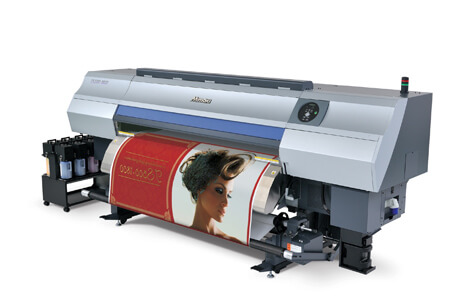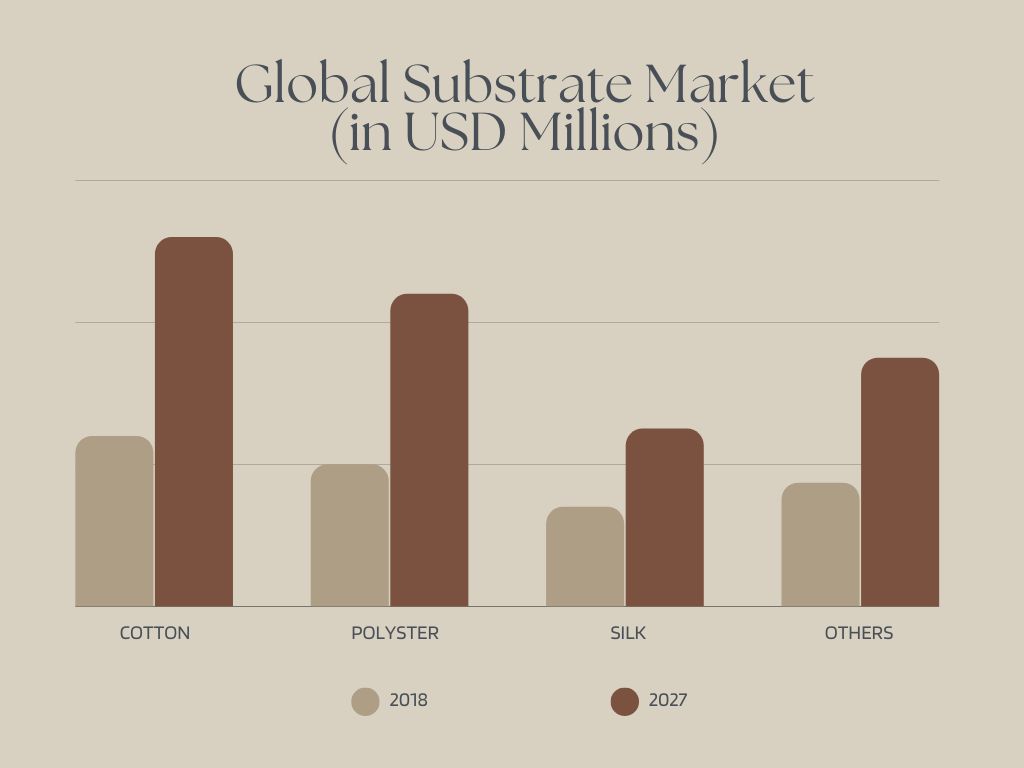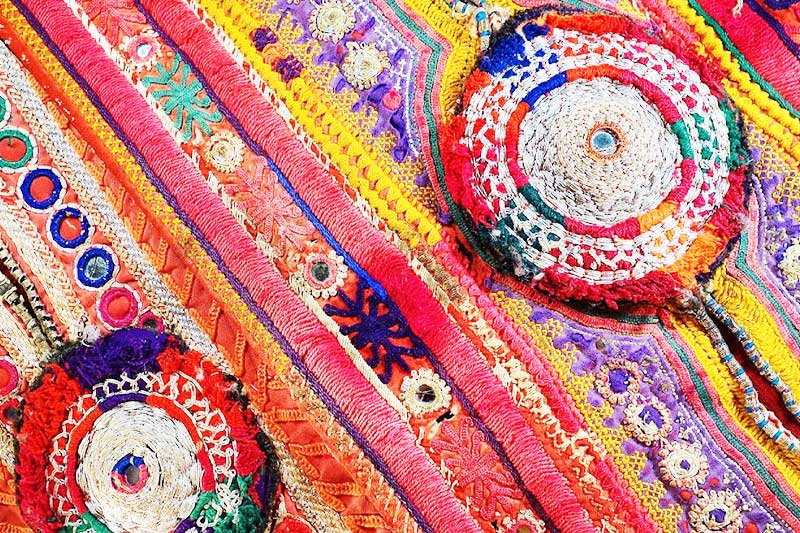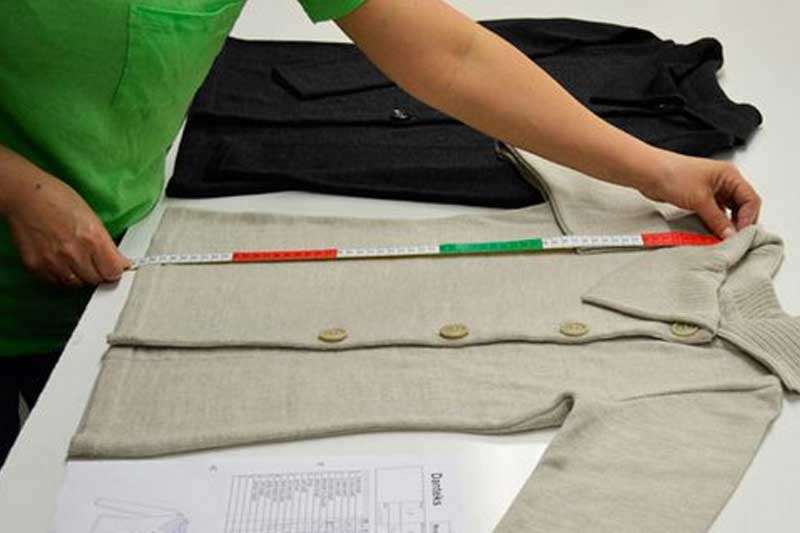3 Types of Fabric You Should Know About for Dye Sublimation

Dye Sublimation creates highly durable products with smoother and brighter colour transitions, creating a more superior look and sleeker finish as compared to inkjet printing.
Sublimation was discovered in 1957 by Noel de Plasse, a Frenchman who, while researching for a textile company, discovered that dyes could be transferred from a solid to a gaseous state without turning into liquids under certain conditions.
Index:
- What is Dye Sublimation
- Fabric for Sublimation
What is Dye Sublimation?
Dye Sublimation printing (also known as all-over printing) is a printing method that transfers ink from one sheet onto the receiving canvas (in our case, fabric).
During the sublimation process, heat causes the sublimation dye to turn into gas. Simultaneously, it also causes the synthetic fibers in polyester to loosen up, allowing gas to slip inside.
When the fabric cools, the dye returns to its solid form, and the polyester fibers tighten, leaving the dye and the fabric to bond chemically at a molecular level, thus making it bright, vibrant, eye-catching, and durable.
Compared to alternative printing methods, which are limited to a particular field, Dye-Sublimation printing is able to transfer a design on every inch of the garment.

Three most common types of fabrics used are:
Cotton:
Cotton is a topmost and the best choice when it comes to sublimation, also a lot of cotton shirts are printed in this way. Sublimated cotton apparels are soft, breathable and very comfortable for people who choose to wear it.
Though you cannot sublimate on 100% cotton, as the dye bonding with the fabric happens on the surface rather than in the fabric itself because of lack of cohesiveness between the cellulose and the dye. This will hence make the image fade, peel or crack over time after 5-6 washes.
However, there are various ways to sublimate cotton. The only thing to ensure is that there needs to be some form of intermediary between the dye and the cotton surface.
The first is to apply a special polyester surface coating to cotton. The other is that you can print the image on a special treated transfer paper, which can be transferred onto cotton in the second step. Sublimation fabric sheets can also be used to replicate the appearance of polyster sublimation.
There are other methods, like using glitter particles, cricut, or vinyl.
Sublimation on cotton requires a temperature of 360°F to 400°F. Some of the practices for getting the best sublimation result involve using a blend of 65% polyester and 35% cotton.
Polyester:
This is another kind of fabric which is typically used for the purpose of dye sublimation.
Mostly, due to the fact that the polymers present in this type of fabric can easily open up when exposed to heat. Due in its gaseous form, dye can enter the fabric through the open pores and get locked within once the fabric gets cooled after the printing process is over.
One of the most important factors which make polyester the best fabric for Dye-Sublimation is undoubtedly the fact that it remains largely free of wrinkles even when worn for a long time.
Synthetic fibers:
Synthetic fibers generally consist of acrylic, olefin, nylon, spandex, acetate, Kevlar, rayon, orlon and lastex.
Out of these, nylon, rayon, spandex and acrylic have become some of the top fabrics for printers using Dye-Sublimation technology because of the strength and durability that these fabrics come with.
Nylon :
It is possible to sublimate on all types of nylon at low temperatures (165°C to 170°C for 80 to 90 seconds), but as there are various types of nylon, each one reacts differently to the dyes.
In order to get the best results, nylon is pre-treated with additives to help with absorption.
Nylon 6 and Nylon 7 are the most common types of Nylons used, as they aid in color penetration and because of their higher durability and adaptability.
Rayon :
You cannot sublimate on 100% rayon because of its soft bonds. The fiber starts to become weak when heated above 150°C with a burning point of 250°C. So the heat from the sublimation printer causes the fabric to melt and become sticky.
However, rayon can be sublimated using either a polyester coating on its substrates or a blend of 30% rayon and 70% polyester.
The polyester coating and the image print is generally known to wash away after 5-6 washes and the color starts fading , so the best recommended and used technique for sublimation is polyester blend.
Acrylic :
As acrylic is rich in polymers, they are great dye absorbers, and thus it provides one of the best results for dye sublimation. They are also preferred because of their transparency and perceptible clarity.
The high polymer content of acrylic eliminates the need for applying any separate polymer coats, thus making 100% acrylic sublimation possible.
Extruded and cast acrylic are the two types of acrylic. Cast acrylic is used over extruded acrylic because of its higher melting point and greater heat resistance, making it a better choice for heat transfer in dye sublimation.
The most suitable temperature for acrylic sublimation is between 370°F and 400°F, with a heat press generally running for 45 to 60 seconds.
Synthetic Fibers if used 100% does not last longer, so its always advised to blend the fiber with polyester like in case of rayon, you can either blend 32% of rayon with 68% of polyester for dye sublimation or you can apply polyester coating on rayon substrates.
However, these do not offer as much comfort as fabrics like cotton. Naturally, many of these are blended with cotton to enhance the comfort factor for wearers.
With various fabrics for sublimation, polyester is one of the best fabrics to use for sublimation. It’s flat surface lends itself exceptionally well to dye-sub printing techniques, and its high quality fabric base means that vivid and bright colours are easily achievable.
Visit Gartex Texprocess India, a leading textile and garment exhibition in India, held in Pragati Maidan, New Delhi and Jio World Convention Centre, Mumbai, and learn about the latest technology, cutting-edge equipment, materials, and services in the industry.
More News
Rural India’s Design Labs: Where Craft Meets Contemporary
The overlooked rise of design innovation beyond urban India In the vast, textured fabric of India's garment and fashion industry, the story…View More
India’s Evolving Role in Global Apparel Supply Chains
In the last few years, global apparel supply chains have been tested like never before. From pandemic-related disruptions to rising geopolitical tensions…View More
Quality Control in Garment Manufacturing: What’s Changing in 2025?
In 2025, garment manufacturing is entering a new era—one defined not only by speed and scale, but by precision, consistency, and sustainability.…View More
How to Identify Authentic Indian Handloom Products?
Indian handloom products are a timeless testament to the country’s rich cultural heritage and craftsmanship. From luxurious Banarasi silks to timeless Khadi…View More
How to Start a Garment Manufacturing Business in India?
India’s textile and garment industry has always been a major contributor to the country’s economy, offering vast opportunities for entrepreneurs. With the…View More
Download
Register Now
Recent Posts
Show Countdown
DELHI
Bharat Mandapam (Pragati Maidan), New Delhi, India
- days
- Hours
- Minutes
- Seconds
MUMBAI
Bombay Exhibition Center, Mumbai






